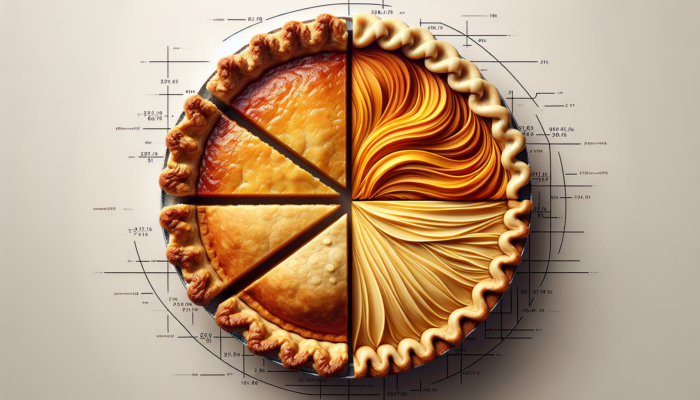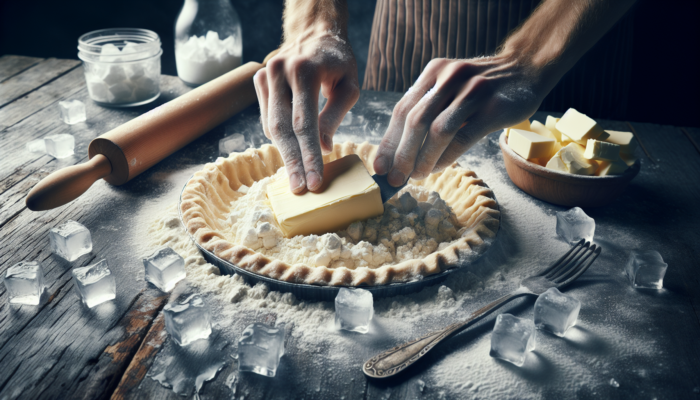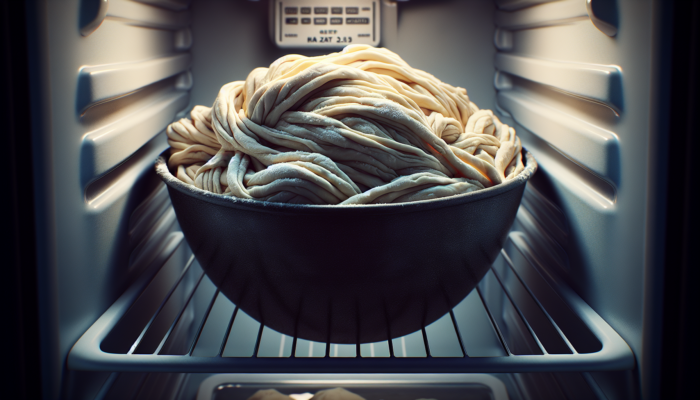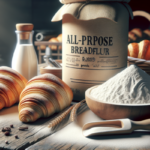Master the Art of Flaky Pie Crusts: Selecting the Ideal Fats for Impeccable Results
Comparing Butter and Shortening: Which Fat Yields the Ideal Flaky Pie Crust?

To uncover the secrets behind achieving a truly flaky pie crust, your selection of fat plays a pivotal role, significantly influencing the texture of the final product. Butter is renowned for its rich flavour and aromatic qualities that amplify the overall taste of your pie. However, many bakers report that butter does not consistently deliver the desired level of flakiness. In contrast, shortening is celebrated for its ability to create a tender, flaky crust, thanks to its unique melting characteristics. For an extraordinary result, consider experimenting with a blend of butter and shortening. This combination allows you to savour the rich taste of butter while enjoying the superior flakiness that shortening offers, resulting in a crust that is both delectable and texturally satisfying.
Combining these two types of fats not only enhances the flavour profile but also significantly bolsters the structural integrity of the crust. You have the flexibility to adjust the ratio according to your taste preferences, with a commonly recommended 50/50 blend often producing fantastic results. Always remember that the quality of your ingredients is crucial; opt for high-quality butter with a higher fat content to guarantee optimal baking outcomes.
The Exceptional Benefits of Incorporating Lard into Your Pie Crust
Despite being frequently overlooked in discussions surrounding fats suitable for pie crusts, lard merits recognition for its extraordinary capacity to produce an exceptionally flaky texture. With nearly 100% fat content, lard creates a crust that is unparalleled in lightness and flakiness. This remarkable quality arises primarily from the unique melting point of the fat molecules present in lard, which promotes the formation of multiple layers within the crust, culminating in a wonderfully flaky texture.
When selecting lard, aim for high-quality leaf lard, sourced specifically from the kidney area of pigs. This variety offers a cleaner taste and superior texture compared to regular lard. If you have reservations about the flavour, rest assured that well-sourced lard does not impart any unpleasant taste; rather, it enhances the overall experience of your pie. Many traditional recipes still embrace lard in pursuit of that sought-after flaky texture, making it a worthwhile option to consider if you have not yet experimented with it.
Crafting Tasty Vegan Pie Crusts: Investigating Plant-Based Alternatives
For those on the lookout for plant-based alternatives, it is entirely feasible to create a flaky pie crust that aligns with various dietary preferences. Popular substitutes such as coconut oil and vegan butter each bring their own unique properties to the table. While coconut oil may yield a slightly different texture, it still achieves commendable flakiness, particularly when kept chilled throughout the mixing process.
It is crucial to bear in mind that utilising these alternatives can profoundly alter the flavour profile of your crust. Coconut oil introduces a subtle coconut essence that may or may not complement the specific type of pie you are crafting. On the other hand, vegan butter can typically replace traditional butter directly; nevertheless, the quality can vary significantly between brands, impacting both flavour and texture.
Experimentation is essential when working with these plant-based options, as achieving the perfect balance of taste and texture could require several attempts. Nonetheless, with the right techniques and an eagerness to explore, crafting a delicious vegan pie crust is entirely achievable, allowing everyone to partake in the joy of baking, regardless of dietary restrictions.
Mastering Your Flaky Pie Crust: The Essential Importance of Keeping Ingredients Chilled

Maintaining Cold Fats: The Secret to Achieving Flaky Layers
The temperature of your fats is intrinsically linked to the texture of your pie crust. Keeping your fats cold is essential for achieving those irresistible flaky layers. When cold fat is incorporated into the dough, it remains solid during the mixing process, forming pockets of fat within the flour. As the pie bakes, these pockets melt, generating steam that lifts and separates the dough, resulting in a beautifully flaky texture.
It is important to extend the chilling process beyond just the fat; all ingredients should be maintained at a low temperature. Take your butter or shortening straight from the fridge to ensure it doesn't melt into the flour prematurely. This practice becomes particularly critical during warm weather or summer months when controlling temperature can be challenging.
To enhance flakiness, consider chilling your mixing bowl and utensils as well. These small adjustments can significantly influence your outcomes, ensuring your crust achieves the desired texture and consistency that elevates your pie experience.
The Indispensable Role of Ice-Cold Water in Pie Dough Preparation
Another vital component in crafting a flaky pie crust is the incorporation of ice-cold water. The temperature of the water is crucial in preserving the integrity of the fats throughout the mixing phase. Adding cold water prevents the fat from melting prematurely, allowing it to remain distinct within the dough, which is essential for achieving that coveted flakiness.
Utilising ice-cold water also restricts gluten development, which can result in a tougher crust. This is pivotal because, while gluten provides structure in bread, it can lead to an undesirable chewiness in pie crusts. It is best to use the minimum amount of cold water needed to bring the dough together. If the mixture appears dry, add water by the teaspoon until you achieve the desired consistency without overworking the dough.
This straightforward yet critical step helps maintain the delicate balance between flakiness and tenderness, ensuring that every bite of your pie crust is as delightful as the filling it encases.
Refrigerating Your Dough: An Essential Step for Baking Success

After blending your dough, the next essential step is to refrigerate it. Allowing your dough to rest in the fridge is crucial, as it relaxes the gluten strands formed during mixing. This relaxation not only facilitates easier rolling but also enhances the overall texture of your crust.
Aim to chill the dough for a minimum of 30 minutes, although longer resting periods can yield even better results. This resting time allows the flour to fully hydrate and meld with the fats, resulting in a dough that is easier to roll out, less prone to shrinkage during baking, and offers improved flakiness.
If you do not plan to use the dough immediately, you can also freeze it. Wrap it tightly in plastic wrap or place it in a freezer bag to prevent freezer burn. When you are ready to bake, simply transfer it to the fridge to thaw overnight.
Chilling and relaxing your dough can profoundly influence the final product, transforming a good pie crust into an exceptional one.
Mastering Your Flaky Pie Crust: Effective Mixing Techniques for Success
Perfecting the Technique of Cutting in Fat for Maximum Flakiness
Incorporating fat into your pie crust is critical for achieving that sought-after flakiness. The method of cutting in the fat, whether it be butter, shortening, or lard, requires careful attention. Your objective is to create small, pea-sized pieces of fat dispersed throughout the flour. This can be accomplished using a pastry cutter, fork, or even your fingers.
When cutting in the fat, take your time and proceed gently. The goal is to preserve those small bits of fat rather than allowing them to melt into the flour. Each piece of fat acts as a barrier to gluten formation, creating pockets that will expand during baking, resulting in a delightfully flaky texture.
If you find this step challenging, consider chilling your utensils to maintain the temperature of the fat. This ensures that each piece remains intact, contributing to the overall flakiness of your crust. Remember that the art of pie-making lies in the details, and properly cutting in your fat is one of the key secrets to achieving a flaky pie crust.
Minimising Dough Handling: The Path to Tender Pie Crusts
Overworking your dough is a common mistake that can result in a tough, undesirable crust. After incorporating the fat, it is essential to handle the dough as minimally as possible. Excessive mixing encourages gluten development, which can cause your pie crust to lose its tender, flaky quality.
When combining the ingredients, mix them just until they come together. The dough should still appear slightly shaggy; do not be alarmed by this. The addition of cold water should be just sufficient to amalgamate the ingredients without extensive handling. This minimalist approach ensures that your dough remains tender and flaky, allowing it to rise beautifully during baking.
If you encounter difficulty working with the dough, resist the urge to knead it. Instead, allow it time to rest in the fridge. This resting period allows the flour to fully hydrate and the gluten to relax, making it easier to roll out without compromising texture.
Elevating Your Pie Crust with the Folding Technique
The folding method is an exceptional technique for those eager to enhance their pie-crust skills. Similar to the process of making puff pastry, this approach involves rolling out the dough and folding it over itself multiple times. This procedure creates layers within the crust that significantly contribute to its flakiness.
Begin by rolling out your dough into a rectangular shape. Next, fold it into thirds, like a letter, before rolling it out again. Repeat this process several times, ensuring the dough remains chilled throughout. Each fold introduces additional layers of fat and flour, which will separate during baking, resulting in a beautifully flaky texture.
This technique is particularly advantageous for those wanting to create a more sophisticated pie crust. It enhances both flavour and texture, resulting in a crust that is not only visually appealing but also delectably flaky and tender, making your pie a true standout.
Maintaining Cold Ingredients: A Key to Pie Crust Perfection
To ensure optimal results, it is crucial to keep every component of your pie crust cold, including the fats and any liquids you plan to use. Maintaining chilliness among all ingredients helps preserve the integrity of the fats and prevents them from melting prematurely during mixing.
When preparing your ingredients, consider briefly freezing your butter or shortening. Similarly, using ice-cold water or chilling your mixing bowl can significantly enhance the process. The colder your ingredients, the better the flakiness of your final crust.
This practice is particularly vital during warmer months or in humid environments, where heat can quickly affect the state of your fats. By chilling your ingredients, you can produce a pie crust that is consistently flaky and delicious, regardless of the conditions.
The Necessity of Resting Dough: A Crucial Step for Perfect Pie Crusts
Resting the dough is an essential step that novice bakers often overlook. After mixing your dough, place it in the fridge to rest. This process allows the gluten to relax and the moisture to distribute evenly throughout the dough, making it easier to roll out while also improving the final texture.
Aim for a resting time of at least 30 minutes, although extending this period can yield even better results. When you are ready to use the dough, take it out and allow it to sit for a few minutes at room temperature before rolling it out. This slight warming makes the dough more pliable, facilitating easier handling.
Resting not only enhances the manageability of the dough but also improves its flavour. As the dough sits, the flour continues to hydrate, contributing to a more cohesive structure. When baked, this results in a flaky and tender crust that perfectly complements any filling.
Mastering Your Flaky Pie Crust: Understanding the Different Types of Flour
Leveraging All-Purpose Flour for Versatile Pie Baking
Many bakers select all-purpose flour as their preferred choice due to its versatility across a range of recipes. While it can work adequately for pie crusts, it may not provide the tender, flaky results that some bakers aspire to achieve. With a moderate protein content, all-purpose flour can develop gluten, which is advantageous for bread but may lead to a denser pie crust.
If you opt for all-purpose flour, consider adjusting your technique to enhance the results. The secret lies in handling the dough minimally and incorporating fat correctly. This way, you can still create a decent crust, although it may not reach the same lightness and flakiness as those made with specialised flours.
To improve the texture, some bakers prefer to blend a small portion of cake flour with all-purpose flour, which can contribute to a more tender crust while remaining accessible for most home bakers.
Choosing Pastry Flour for Superior Flakiness in Your Pie Crust
For those truly dedicated to achieving an exceptionally flaky pie crust, pastry flour is an outstanding option. This flour produces less gluten and has a lower protein content compared to all-purpose flour, resulting in a more tender and flaky crust. Specifically designed for pastries, this flour is a preferred choice among professional bakers.
When working with Pastry flour, you may need slightly less liquid than with all-purpose flour. This is due to the differing moisture absorption rates of pastry flour. A good guideline is to start with the same amount of water and adjust as necessary, ensuring your dough remains manageable and easy to work with.
Choosing pastry flour can elevate your pie crust, leading to a lighter, more delicate texture that beautifully complements a variety of fillings, enriching your overall pie experience.
Incorporating Cake Flour for Enhanced Tenderness
Integrating cake flour into your flour selection can add a layer of finesse to your pie crust. With its fine texture and low protein content, cake flour enhances tenderness and flakiness, transforming your crust into a standout feature of your pie.
Typically, blending equal parts of all-purpose flour and cake flour yields excellent results. This mixture strikes a balance between structure and tenderness, offering the best of both worlds. The fine texture of cake flour contributes to a lighter crust that remains robust enough to support fillings without buckling.
This method is particularly effective for fruit pies, where a delicate crust can elevate the dish. By incorporating cake flour, you ensure that every bite melts in your mouth while providing the necessary support for your fillings.
Avoiding Bread Flour in Your Pie Crusts
While bread flour is typically associated with yeasted goods, its higher protein content can lead to a chewier texture when utilised in pie crusts. This is less than ideal, as the objective is to create a flaky and tender crust. Using bread flour can result in a tougher pie crust that detracts from the overall eating experience.
If bread flour is your only option, consider mixing it in smaller proportions with all-purpose flour to mitigate the effects of gluten development. However, for the best results, stick with flours that are more suitable for pie-making, such as all-purpose, pastry, or cake flour.
Selecting the appropriate type of flour is crucial in pie-making. While experimentation can be enjoyable, understanding the unique properties of each type of flour will guide you towards achieving the perfect flaky pie crust.
Whole Wheat Flour: Infusing a Nutty Essence into Your Pie Crust
whole wheat flour brings a distinct nutty flavour and nutritional benefits to your pie crust. However, it is essential to acknowledge that it can also result in a denser texture, which might not be suitable for every pie. The bran and germ present in whole wheat flour can impede gluten development, potentially leading to a crust that does not rise as beautifully.
If you wish to incorporate whole wheat flour into your pie crust, consider blending it with all-purpose or pastry flour. A 50% mix of whole wheat flour and 50% all-purpose flour can create a harmonious balance, adding flavour without sacrificing flakiness.
This approach works particularly well for rustic pies, where the hearty flavour of whole wheat flour complements robust fillings. Embracing whole wheat flour can enhance the taste of your pie while contributing to a more nutritious option, appealing to health-conscious bakers.
Mastering Your Flaky Pie Crust: Essential Techniques for Rolling and Shaping
Ensuring Consistent Thickness for Even Baking
Achieving a consistent thickness while rolling out your pie crust is crucial for ensuring even baking. An unevenly rolled crust can create hot spots, resulting in overcooked or undercooked sections during the baking process. To maintain uniformity, begin from the centre and work your way outward, rotating the dough as you go.
Utilising a rolling pin with guides can assist you in maintaining an even thickness, typically around 1/8 inch thick. This consistency allows the crust to bake uniformly while providing sufficient structure to support the filling. If you notice any thinner areas, gently patch them with excess dough to ensure a uniform surface throughout.
The surface on which you roll is equally important. A lightly floured surface can help prevent sticking, but be cautious not to overload the dough with flour, as this may lead to a drier crust. Keeping the dough chilled while rolling also aids in achieving the perfect thickness while preserving its integrity.
Avoiding Over-Rolling to Preserve Flakiness
While it may be tempting to roll out your dough multiple times for perfection, over-rolling can lead to tough crusts. Each time you roll out the dough, you risk developing gluten, which compromises the desired flakiness. Limit re-rolling to an absolute minimum and work with the dough efficiently to reduce handling and maintain its integrity.
As a general guideline, once you have rolled it out and placed it in your pie dish, avoid rolling it again unless absolutely necessary. If you find the dough challenging to manage, consider taking a break and refrigerating it for a few minutes before trying again.
A gentle hand and careful touch are your best allies when rolling out pie dough. Treat it with respect, and it will reward you with a flaky, tender crust that is simply irresistible.
Perfecting the Crimping Technique for a Beautiful Finish
Crimping the edges of your pie crust serves both a decorative function and a practical purpose. Properly crimped edges seal in the filling and prevent juices from leaking during baking, ensuring your pie maintains its integrity and presents beautifully when served.
You can effectively crimp using your fingers or a fork. Pinch the edges together with your fingers to create an attractive wave-like pattern or use a fork to press down along the edges for a classic appearance.
Regardless of your chosen method, ensure the crust is well-sealed to prevent steam from escaping, as this can lead to a dry filling. A well-crimped pie not only looks impressive but also guarantees that every slice retains its moisture and flavour, enhancing the overall pie-eating experience.
Mastering Your Flaky Pie Crust: Key Tips for Blind Baking
Utilising Pie Weights for Flawless Blind Baking
Blind baking is a technique that ensures your pie crust is perfectly cooked before adding the filling. One of the most effective ways to achieve this is by utilising pie weights. These weights help prevent the crust from puffing up and losing its shape during the baking process.
To blind bake effectively, line your pie crust with parchment paper and fill it with pie weights or dried beans. This weight keeps the crust flat and stable, allowing for even cooking. Following a brief baking period, remove the weights and parchment, then continue baking until the crust is lightly golden.
A common oversight is neglecting to use pie weights, often resulting in a crust that puffs or bubbles. Investing in quality pie weights or improvising with dried beans can significantly enhance the success of your blind baking efforts, ensuring a perfectly cooked crust each time.
The Significance of Docking Your Dough
Docking your dough is a straightforward yet effective technique that involves pricking the bottom of the crust with a fork prior to baking. This process allows steam to escape, preventing air bubbles from forming that could disrupt the crust's surface.
Docking is especially vital for custard or cream pies, where a smooth surface is essential for both aesthetics and texture. Ensure that you dock evenly across the surface to guarantee consistent cooking. Although this step may seem minor, it plays a crucial role in achieving a beautifully baked pie crust.
Neglecting this step can lead to a crust that develops unsightly bubbles, detracting from the overall presentation of your pie. Take the time to dock your dough; it will pay off in the final product.
Determining When to Partially or Fully Bake Your Crust
Understanding when to fully or partially bake your crust is essential for pie success. A partial bake is often sufficient for fruit pies or those with wet fillings. This method allows the crust to establish a base without becoming overly browned before the filling is added.
Conversely, recipes requiring wet fillings, such as custard pies, necessitate a fully baked crust to ensure the filling cooks properly. A fully baked crust should exhibit a golden and crisp appearance, providing a stable base for the filling without becoming soggy.
Recognising the difference between partial and complete baking can dramatically enhance the quality of your pie. Always refer to specific recipe instructions to determine the best approach for your pie crust, ensuring optimal results every time.
Mastering Your Flaky Pie Crust: Baking Temperature and Timing Insights
Beginning with High Heat for Optimal Flakiness
Baking at a high temperature initially is a proven strategy for achieving a crisp, flaky crust. By commencing your pie at around 220°C (425°F), you help set the structure before reducing the temperature. This initial surge of heat causes the water in the fat to convert to steam, creating those beautiful layers essential for flakiness.
Once the crust has set, you can lower the temperature to around 180°C (350°F) to finish baking the pie. This two-step approach permits a perfectly cooked crust that balances browning with tenderness, resulting in an impressive pie.
Keep a close watch on your pie throughout the baking process. While the delightful aroma of baking pastries can be captivating, do not allow it to distract you from monitoring the colour and texture of your crust closely.
Evaluating Your Pie Crust for Perfect Doneness
Knowing how to assess the doneness of your pie crust is crucial for achieving the perfect bake. The crust should exhibit a lovely golden brown hue, indicating that it has cooked through adequately. A crust appearing too pale may suggest undercooking, while a dark, almost burnt appearance indicates overbaking.
Texture is equally significant; a flaky crust should feel crisp without any signs of sogginess. If you notice damp spots, additional baking time may be necessary. Consider using an instant-read thermometer to check the internal temperature; it should read around 93°C (200°F) for a fully baked crust that is both delicious and satisfying.
Regularly assess your pie during the baking process to ensure it reaches the sweet spot of doneness, elevating your pie-baking skills to new heights.
Cooling Your Pie for Maximum Flakiness
Once your pie has emerged from the oven, it is essential to allow it to cool appropriately. Doing so enables the filling to set and the flavours to meld, contributing to the crust's flakiness. If you slice into a still-hot pie, you run the risk of it collapsing, leading to an unappealing presentation.
Position your pie on a wire rack to cool for at least 1 hour before serving. This airflow aids the crust in maintaining its crispness, preventing it from becoming soggy. Cooling also permits the filling time to thicken, ensuring each slice retains its shape beautifully.
Patience is indeed a virtue when it comes to cooling pies; allowing them to rest before serving not only enhances appearance but also improves flavour, making a significant difference for your guests.
Common Questions Regarding Perfecting Pie Crusts
Which fat is best for achieving a flaky pie crust?
The ideal fats for creating a flaky pie crust are typically butter and shortening. While butter enhances flavour, shortening contributes significantly to flakiness. Some bakers also prefer lard for its exceptional flakiness.
How can I prevent my pie crust from becoming soggy?
To avoid a soggy pie crust, it is essential to blind bake it before adding the filling. Utilising pie weights and ensuring that your crust is fully baked will also help maintain its texture and prevent sogginess.
Is it feasible to use whole wheat flour for a pie crust?
Yes, whole wheat flour can be employed for a pie crust, but it may create a denser texture. Mixing it with all-purpose flour is advisable for better flavour and flakiness.
How long should I chill my pie dough for optimal results?
Chill your pie dough for a minimum of 30 minutes; longer chilling times can further enhance texture and handling, yielding superior final results.
What purpose does docking the dough serve?
Docking the dough involves pricking it with a fork to allow steam to escape during baking. This process prevents air bubbles and ensures an even bake, enhancing the overall appearance of your pie.
Should I use ice-cold water in my pie crust preparation?
Absolutely! Incorporating ice-cold water helps maintain the temperature of the fats, preventing them from melting too soon and contributing to a flaky texture that is vital for successful pie crusts.
Can I freeze my pie crust dough for later use?
Definitely! You can freeze pie crust dough for up to three months. To prevent freezer burn, wrap it tightly in plastic wrap and place it in a freezer bag.
How do I know when my pie crust is perfectly baked?
A perfectly baked pie crust should exhibit a golden brown colour and a crisp texture. For optimal doneness, utilise an instant-read thermometer to check that the internal temperature is around 93°C (200°F).
What is the folding method for crafting pie crusts?
The folding method involves rolling out the dough and folding it over multiple times to create layers, enhancing flakiness similar to puff pastry preparation techniques.
What type of flour is best suited for pie crusts?
Pastry flour is ideal for pie crusts due to its low protein content, resulting in a more tender and flaky crust. Mixing in cake flour can also enhance tenderness, providing a delightful texture.
Join Our Facebook Community for More Baking Tips and Tricks!
The post Secrets to a Flaky Pie Crust: Master Tips appeared first on https://cookinggods.com
The Article Flaky Pie Crust Secrets: Essential Tips for Perfection Was Found On https://limitsofstrategy.com

